January 23, 2023
Conceptualizer: a Story Planning Program
There are fiction authors who need to plan every, single, detail in advance – they’re called “plotters”. Then there are writers who write by their seat of their pants – hence they’re called “pantsers”. In reality, most authors fall somewhere in-between. The truth is, we all need some degree of planning for most works (except perhaps stream-of-consciousness or heavily experimental). And so, we could all benefit from a story planning program.
As with everything I make – programs, books, or blog posts – the intended audience of Conceptualizer, my story planning program, was first and foremost myself. That is, I started to make a story planner because I felt I could benefit from one. I’m certainly not a plotter (though not a pantser either), but I like to keep some sort of notes regarding what will happen when.
And so, perhaps ironically, this sort of selfishness can be very useful to you, too! Let’s take a look at Conceptualizer, what it does and how it works, and at the end of this post I’ll include a link for you so that you can try it.
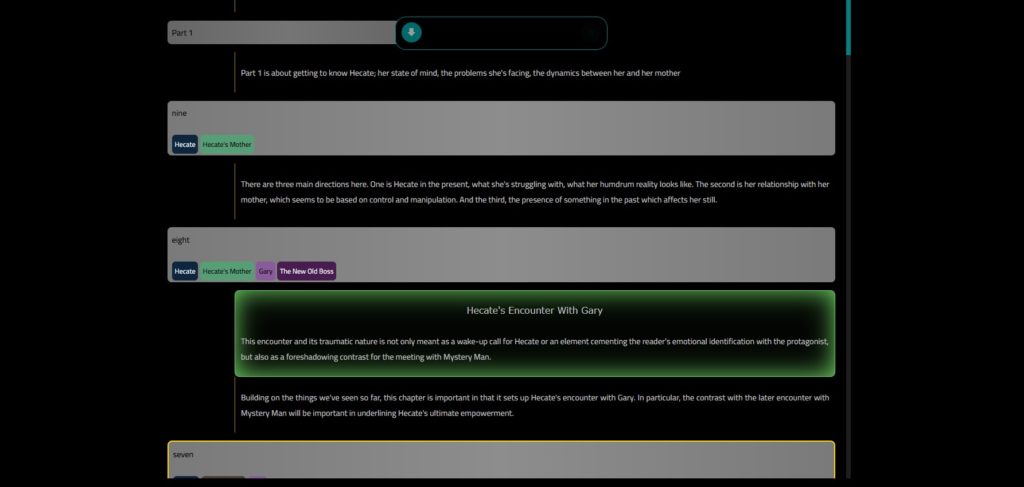
What a Story Planning Program Should Be Like
When I started thinking about the program and what I wanted it to contain, I focused on what I did before and how it could become better. So, at this point, allow me to offer you a sneak preview of how I used to plan my novels. It’s a bit like the “behind the scenes” I gave you about writing short stories, only this time more visual.
The collage below consists of screenshots from… Google Docs and my notes/diagrams for The Perfect Gray. Yes, it was as cluttered as it sounds and seems.
Warning: Though these are only notes and don’t necessarily reflect the actual final form of the novel, they still contain some minor spoilers. Although – as a literary fiction novel – The Perfect Gray doesn’t rely on plot, don’t read too carefully if you don’t want to know. For the same reason, the demo file of Conceptualizer doesn’t contain too specific details in part/chapter descriptions etc.
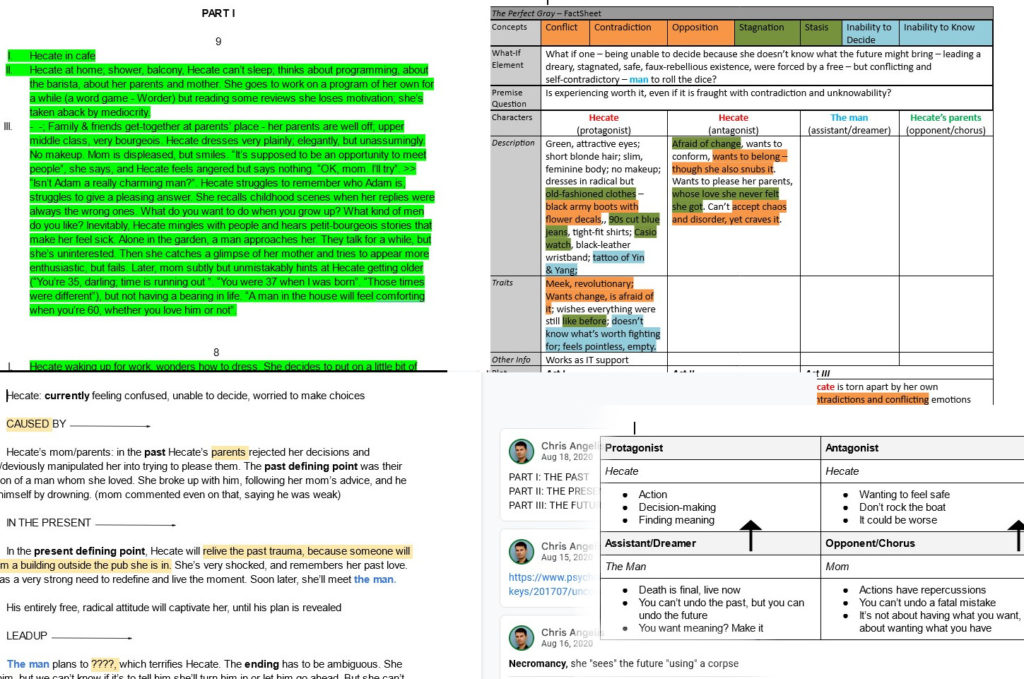
A Good Story Planning Program Should Be About Structure and Flow
Though I have the ability to contain in my head (and process) a massive amount of information, it’s stressing. What if I forgot something? Moreover, I didn’t like how scattered everything was in my Google Docs. I realized, I wanted to have a structured way of showing where the novel was going; a flow, if you like.
I wanted something like the top-left screenshot above (green color signifying I’ve taken care of that part), only in a more sense-making and inspiring manner.
More importantly, I realized I needed to have a way of understanding where it’s all going. That’s where checkpoints entered the picture.
If you recall my post on points of divergence in fiction, I there explained how the plot of every solid, cohesive narrative, can be basically outlined in a matter of 5-6 checkpoints. Think of them as very important events in the narrative, almost points of no return. As an example, here are 6 checkpoints we can come up with to describe Bram Stoker’s Dracula:
- Jonathan Harker goes to Transylvania
- He discovers Count Dracula is a vampire
- Dracula goes to England to create more vampires
- He attacks Mina
- Jonathan and his peers chase Dracula back to Transylvania
- They kill him
Identifying the checkpoints of your narrative is an immensely important part of your planning strategy. The better you are able to do that, the easier your writing will be and the more coherent your story.
Other Elements in Conceptualizer
Besides structure and flow – with checkpoints being, obviously enough, crucial parts in this flow – this story planning program also keeps track of characters: their descriptions, behavioral patterns, and all other sorts of information.
Here’s an example. This is again the demo file (The Perfect Gray), in Display Mode:
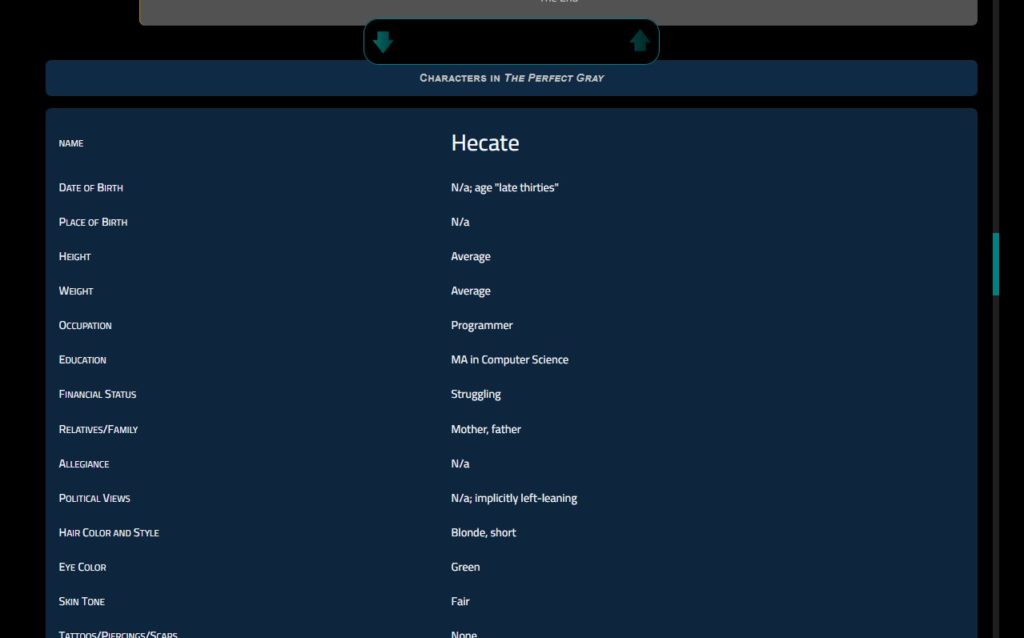
Of course, no story planning program would be complete without exporting capabilities. At any point, you can save all data you enter as an external file. The file is compatible with any device you access the program from. That is, you can work on your laptop, then save the file and send it to your mobile to continue from there. Handy!
Moreover, from Display Mode, there is the option to export the flow as an .html file – which is easy to read on any device and makes copy/pasting very easy.
And of course, Conceptualizer comes with a detailed help file, and plenty of customization options – I confess that I often got absentminded playing with color settings, rather than working on the code!
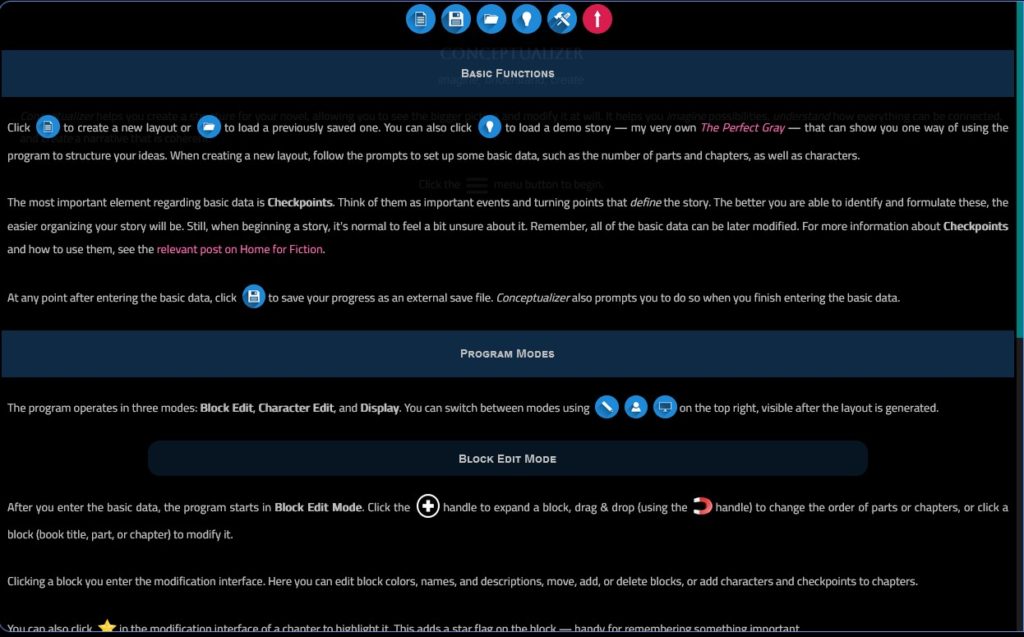
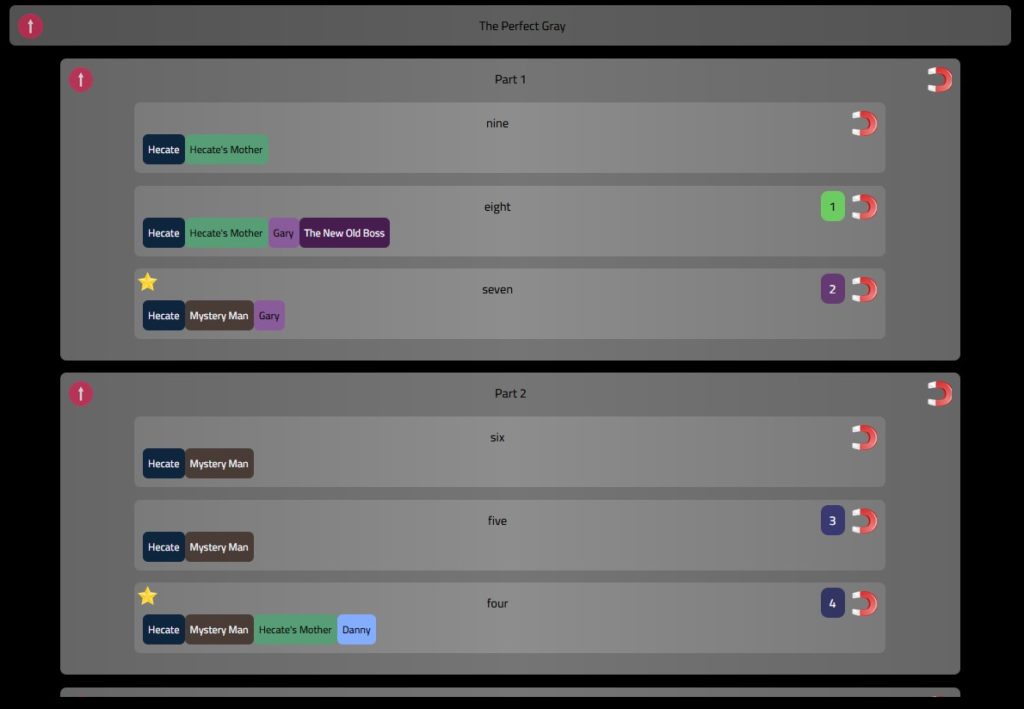
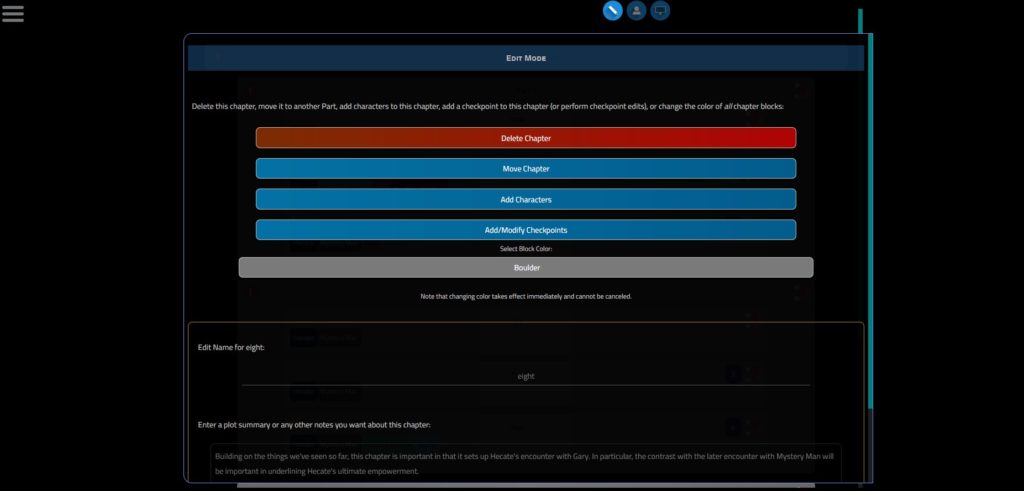
Try It!
You can try Conceptualizer following this link. For a full list of my available programs, see the relevant page on the main site.
I don't show you ads or newsletter pop-ups; everything is offered for free. Wanna help support a human internet?
